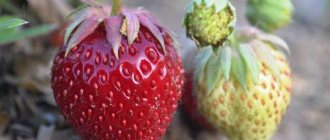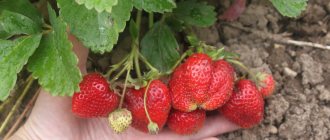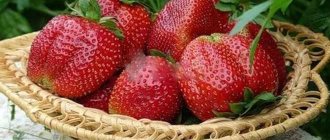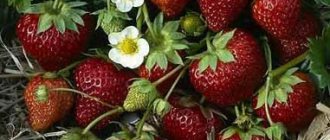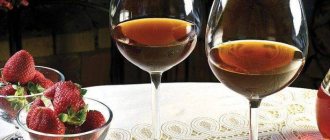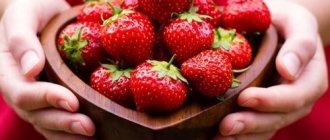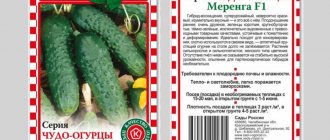Having carefully studied the description of the strawberry variety Ruby Pendant, it will be easier for any gardener to decide on the choice of crop. Breeders crossed two well-known strawberry varieties, Zenga and Fairfax, resulting in a new strawberry variety, Ruby Pendant. This culture is rich in positive qualities and is suitable for any gardener.
Description
Strawberries of the Ruby Pendant variety are medium in size and have a burgundy hue. The average weight of one berry is 20-25 g. Most often, the fruits are presented in the shape of a cone. Strawberries are very juicy, and their appearance will make others fall in love with them, as they sparkle in the sun. The fruit itself has a small number of cuts that are pressed into the pulp. They are moderately sweet, not cloying, but very juicy. If you start comparing Ruby Pendant strawberries with many other representatives of the crop, you will notice a large number of advantages. First of all, it should be noted that the berries of the variety are quite compact. Due to their density, they do not crush during transportation. This is one of the most important criteria for strawberries.
No less important is the fact that the strawberry Ruby Pendant does not lose its shape during the preparation of jam. The structure of the berry also remains unchanged.
Ruby pendant is a medium-yielding crop. If the gardener provides proper and careful care, then from one strawberry bush he will be able to collect about half a kilogram of juicy and aromatic berries. Of course, using ruby pendant strawberries for commercial purposes, such a harvest is not considered large, but it is enough for a family.
Strawberries of the Ruby Pendant variety are mid-season crops. The bushes are not very spreading and quite compact. Despite the fact that the bushes are not tall, they are powerful and have a strong root system. As for the flower stalks, they are located below the leaves. On one bush you can notice a large number of small inflorescences. Peduncles are presented in the form of small neat umbrellas.
General information about the variety
Strawberries of the Ruby Pendant variety are remontant and can bear fruit throughout the year. It has strong immunity, but not the highest yield. Characteristics of the variety:
- The bush is compact, low, semi-spreading.
- Powerful root system.
- The berries are a rich burgundy color with a high content of seeds.
- The yield is average, up to 0.5 kg per plant.
- Peduncles in the shape of umbrellas are located below the level of the leaves.
- Winter hardiness is average, shelters are not required at temperatures above -23 0C.
- Has a fragrant strawberry aroma.
- Remontant mid-late variety.
- Good transportability and keeping quality of fruits.
- Universal purpose: freezing, processing, fresh consumption.
Due to its average yield, Ruby Pendant is not suitable for commercial cultivation. For cultivation for personal purposes on a personal plot, this is an ideal option. The variety is little susceptible to diseases, tolerates winter well and pleases gardeners with the rich dessert taste of the fruit.
Advantages and disadvantages
Whatever strawberry a person chooses to grow, any variety has its advantages and disadvantages. As for the advantages of the Ruby Pendant variety, they include:
- The yield is stable, and the fruits on the bushes ripen at the same time, which is very good when harvesting.
- The fruits are easy to pick from the bush.
- This variety of strawberries takes root very quickly in any soil and in any climatic conditions. So replanting the plant will not cause any difficulties.
- Portability of transportation, during which they do not lose their shape and attractive appearance.
As for the disadvantages, they include:
- Average yield of the Ruby Pendant variety.
- When the fruiting season comes to an end, the berries become significantly smaller in volume.
- In winter, they must be covered, as otherwise the plants may die.
- Regarding fertilizer, it has excessive requirements.
Strawberries of the Ruby Pendant variety have been grown in our country for more than 50 years. Of course, its yield is much inferior to many newly bred varieties, but because of this it has not lost its popularity.
Varietal features
The ruby pendant has some distinctive features from other varieties of strawberries. The berries of this variety are dense in structure, which is their main feature.
Dimensions and appearance of the bush
The appearance of the strawberry bush has a semi-spreading structure, its height is about 40 centimeters. The leaves are medium-sized and moderately spaced.
The Ruby Pendant has a powerful and stable root system. Peduncles are located below the level of leaves. The tendrils are larger in size than the shoots of other strawberry varieties and have an oblong shape.
Flowering, pollinators and fruiting
Ruby pendant blooms from late May to early June. The strawberries bloom for the second time in early September. Pollination occurs with the help of wind and insects: bumblebees, bees.
With proper care and pruning, the variety can bear fruit until late autumn. The berries ripen for the first time in mid-summer, like other varieties of mid-season strawberries. The second fruiting occurs in mid-autumn and lasts until the first frost. Fruiting is good; from one bush you can harvest from 0.5 to 1 kilogram of strawberries.
The fruits of the Ruby Pendant are distinguished by their dense pulp; even during transportation they do not lose their presentation.
Taste qualities and scope of application of berries
The fruits are very sweet, but not cloying in taste. Therefore, they are used for homemade preparations: jams, compotes, preserves. During fruiting, the berries are used as food, in the preparation of baked goods, homemade yoghurts and milkshakes. For the winter, the fruits are often frozen fresh.
Immunity to diseases and pests
The variety is not susceptible to pests and diseases. Even with a lack of care, it can withstand unfavorable growing conditions. The only thing it cannot tolerate is excessive moisture in the soil and cold. Under such conditions, strawberries are susceptible to gray rot and powdery mildew. The root system begins to die, the leaves turn yellow and then dry out.
Frost and drought resistance
The ruby pendant is resistant to dry weather, but does not like the cold. If the plant is overcooled, it can get sick, so on cool days it is recommended to cover the bushes at night. It is imperative to cover strawberries during the winter.
Choosing a place and time for landing
If you decide to grow Ruby Pendant strawberries, then the most optimal time for planting seedlings is August. If you plant the crop in the spring, you can harvest the first harvest a year later. The place for seedlings should be prepared in advance. To do this, the ground is dug up, loosened and fertilized. Disinfection of the soil will be positive. This will help the plant not to get a fungal infection. To do this, it will be enough to sprinkle the beds with warm water with the addition of potassium permanganate or a previously prepared iodine solution.
You need to replant the bushes in the evening, since in the daytime direct rays of the sun can harm the plant.
Description of the variety
Ruby pendant is a mid-season strawberry of universal use, resistant to most diseases of berry crops.
The variety is successfully cultivated in the West Siberian, Central Black Earth, Central, Volga-Vyatka, and East Siberian regions of the country.
Bushes
The Ruby Pendant bush can be described briefly: everything is average. There is a moderate amount of leaves, the height of the bushes is neither large nor small, the type of bush is semi-spreading. The most outstanding part is the powerful roots, which allow the variety to survive in extreme “country” conditions. Ruby pendant produces large mustaches, the number of which is quite sufficient for propagation of the variety in the volume of a summer cottage.
The umbrella-shaped flower stalks do not grow to the height of the leaves, so the berries are slightly covered from birds and hot sun rays.
The Ruby Pendant variety is resistant to the formation of flower buds at high temperatures and long daylight hours. Under favorable conditions, it is able to bear fruit until autumn
Berries
The beautiful cone-shaped berries correspond to the name of the variety - red, shiny, with a characteristic shade of pink-burgundy color. Inside the flesh is dark red. The structure of the fruit is very pleasant - dense, juicy, without veins or crunch. The taste is dominated by sweetness, but without cloying, with a pleasant strawberry aroma. They say about such strawberries “they are real.”
The size and weight of the berries greatly depend on the growing conditions. The average weight is 15−30 g. In gardens where the variety is fully cared for, single specimens of 50 g are formed. By the end of the fruiting period, the berries become noticeably smaller.
Ruby pendant berries are good fresh, in compotes and jam. The preparations are fragrant, bright, and the berries remain intact. When frozen, they do not lose taste and aroma
Productivity
The ripening of the Ruby pendant is friendly. The fruits come off effortlessly, do not crumple in your hands or in containers, and do not flow. They will definitely get from the dacha to the apartment. If you remove them 2-3 days before full ripeness and place them side by side, the crop can be transported over the longest distances.
The average yield is 500−700 g per plant. But this figure is controversial. Some summer residents even claim a kilogram of strawberries per bush. It can be concluded that the variety is responsive to intensive agricultural technology. In the difficult climatic conditions of many regions of Russia, it shows itself consistently, just the harvest volumes will be slightly smaller.
It is important to harvest your Ruby Pendant regularly. A large number of overripe fruits can lead to the active spread of fungal diseases
Technological features of planting
Strawberries of the Ruby pendant variety form quite large and powerful rosettes. When planting seedlings in the ground, a distance of 40 cm must be maintained. As for row spacing, an interval of 30 cm must be maintained.
The most correct seating arrangement for strawberries Ruby pendant is a checkerboard arrangement. Thanks to this method, the bushes do not interfere with each other, and each of them receives a sufficient amount of light.
The depth of the hole should be at least 20 cm. After this, you will need to add a small handful of humus with the addition of wood to the hole. All this will need to be thoroughly mixed with the main soil. At the time of planting, the root system is carefully straightened and sprinkled with earth. Under no circumstances should soil fall on the heart of the bush. After planting, the plants are watered with warm water at the base of the root.
Landing rules
Correctly taken measures during planting help achieve increased productivity . Strawberries must be planted within strictly specified periods and in soil with a pH level of no higher than 6.
Deadlines
Ruby pendant seedlings are planted in open ground in the spring, when the earth warms up from the sun's heat. Planting in the fall before the onset of cold weather is also allowed.
Additional Information. It is better to plant on the site in the evening.
Selecting a site and preparing beds for strawberries
The variety is grown on slightly acidic or neutral soil. An increased content of lime leads to loss of fruitfulness and yellowing and shredding of leaf blades. It is not recommended to plant strawberries in shaded areas and in lowlands so that moisture does not accumulate at the roots.
Preparation of seedlings
Before planting in open ground, seedlings must be kept for about 5 days in a cool place. On each seedling, only the 2 inner youngest leaves are left, the rest are cut off. In order for strawberries to quickly strengthen their root system after planting, it is recommended to dip the roots of each seedling in a mixture of clay and peat in equal proportions.
Stages of the planting process
Holes are dug with a depth and width of 30-40 centimeters. The distance between the holes should be at least 35 centimeters. A layer of humus and peat soil is placed at the bottom. The seedlings are placed in holes and covered with earth around them. Afterwards, you need to water each bush generously.
Important! When planting, it is necessary to compact the soil tightly so as not to leave air-filled areas.
Basic rules of care
The ruby pendant loves moist soils. The main attention should be paid to the irrigation system. As for the taste of strawberries, they directly depend on the components of the soil, as well as the level of its fertility.
If you plant plants on acidic soils and do not add the necessary fertilizers, the berries will very quickly lose volume and lose their taste.
Features of watering, loosening the soil and weeding
In order for Ruby Pendant strawberries to produce a good harvest, it is necessary to maintain a balance of moisture in the soil. Weather conditions should also be taken into account. Before starting watering, the gardener must carefully check the moisture content of the soil where the plant grows. To do this, you just need to dip your finger into the ground and make a moisture assessment. Under no circumstances should water stagnate at the base of the root, otherwise the berries will begin to rot profusely and become very watery and tasteless. In addition, due to excess moisture, strawberries may be susceptible to fungal infections. Most often, a ruby pendant is subject to gray rot.
As for loosening the soil, this must be done as often as possible. Along with this, you need to carefully inspect the bushes and rid them of dried leaves. Keep a close eye on weeds. As soon as they begin to emerge on the beds or between them, weeding should be carried out.
Mulching
Mulching is the covering of the top layer of soil with special organic materials. This allows you to save cultivated plants from the appearance of annoying weeds. It is also a good nutritional support for strawberries of any variety. Thanks to mulching the soil, every gardener protects plants from frost and possible pests.
Each type of mulch is responsible for its own effect. For example, if you sprinkle strawberry bushes of the Ruby Pendant variety with humus or peat, it will replenish its nutritional supply. If you use straw or sawdust, then in this way you will protect your crops from frost, and already ripe berries will not touch the soil.
The Ruby Pendant variety must be mulched in early spring using humus. Also, this procedure is carried out at the time of flowering of the bushes, and after harvesting the entire crop. It is important that this action should be carried out only after loosening the soil. When winter approaches, strawberry bushes are covered with straw.
Agricultural technology
Landing
Planting material of the variety can be purchased or ordered at specialized sales points. Ruby pendant strawberries are best cultivated on slightly acidic or neutral soils, which contain all the necessary nutrients. Plant bushes are characterized by relatively large sizes, so when planting it is recommended to select an appropriate scheme that would provide the plantings with a sufficient level of nutrition. Most often, a distance of 35-40 cm is maintained between two bushes; in some cases, sparser planting is allowed.
Strawberry seedlings are most often planted in the spring or autumn in the afternoon. Before planting, they are kept in a cool room for 5 days. On each seedling, only two inner leaves are retained, all others, especially dry and old ones, are removed. Without this, the root system risks not being able to cope with rooting, and the plant will die. Immediately before planting in the hole, the roots of the planting material are dipped in mash prepared by mixing peat and clay in equal proportions.
Strawberries don't bloom but produce mustaches
Additional information : the seedling in the planting hole is densely sprinkled with earth and compacted so that there are no cavities filled with air. At the end, abundant irrigation is carried out.
Upon completion of planting, it is necessary to mulch the strawberry plantings. For this purpose, either a special covering material for plants or compacted black agrofibre is used. This will protect the plants from weeds. Thanks to this, the summer resident’s labor and time are saved, which could have been spent on regular weeding. With mulch, you don’t have to loosen the soil after the next irrigation, which allows you to avoid damaging the strawberry bushes again. The second advantage of covering material is that the plants remain clean after precipitation.
A significant disadvantage when using agrofibre is the need for more frequent watering, since rainwater practically does not penetrate under it. If possible, it is better to install a drip irrigation system on the plot.
Additional Information! Planting a ruby pendant in cut car tires or plastic pipes is widely practiced. This way you can reduce the area occupied by plantings, and also use strawberry bushes as a kind of decorative decoration. Caring for such plantings is greatly simplified.
Watering
Irrigation is carried out using methods typical for strawberries, which include:
- drip;
- sprinkler;
- intra-ground.
This strawberry variety reacts negatively to excessive waterlogging. Excess moisture can cause rotting of the root system. For each square meter of plantings, it is enough to add 10-12 liters of warm, settled water.
Watering strawberries
Top dressing
The ruby pendant must be fully provided with all macro- and micronutrients, however, at the first stages of cultivation, the main ones - nitrogen, potassium and phosphorus - are of greatest value. In view of this, at the beginning of the growing season, special emphasis is placed on the use of nitrogen-containing fertilizers. It is best to use organic fertilizers during this period - humus or compost. It is not recommended to use fresh manure and mineral fertilizers, since they immediately provoke excessive growth of the vegetative mass to the detriment of the fruits.
In autumn, it is important to sufficiently provide the plant with three main macroelements. They can be obtained by using manure and ash. This is especially necessary for young plantings planted this year.
Please note : the best fertilizer option for subsequent fertilizing is wood ash. It contains potassium and phosphorus, as well as all the necessary trace elements.
Thus, the strawberry pendant is fed in accordance with the following scheme:
- First feeding . It is carried out at the beginning of spring, when the snow has completely melted and the temperature begins to rise rapidly.
- Second feeding. It is carried out after the completion of the first wave of harvest. Its purpose is to enable plants to form and set flower buds for next year's harvest.
- Third feeding. It is carried out after the entire harvest has been fully harvested. It is necessary for the plantings to properly prepare for the approaching winter period.
Trimming
Strawberries certainly begin to grow mustaches during the growing season. Among them, it is necessary to select the largest and fully formed ones and preserve them, while all the rest must be removed in a timely manner. The remaining whiskers are pinched, trying to prevent them from growing and taking root. They absorb a significant part of the nutrients, which negatively affects the productivity of strawberries.
Strawberry pruning
Transfer
Remontant strawberry varieties, the category of which includes the Ruby Pendant, cannot be cultivated in the same area for more than 3-4 years in a row. Failure to comply with this rule leads to a decrease in productivity and a gradual decrease in fruit size. This can be avoided by timely transplanting strawberry tendrils to a new plot.
The mustache is collected only from the largest and healthiest plants, which exhibit particularly high productivity. Sometimes strawberries are transplanted in the spring, but it is best to do this in September. During the fall, the plants will have time to take root well, and as spring approaches they will begin to grow intensively again.
Additional Information! In the new growing season, the transplanted mustaches will be able to effectively use up the moisture reserves accumulated over the winter and spring, resulting in a high-quality harvest.
Plant protection from diseases
Strawberry Pendant is relatively resistant to major crop diseases. However, in warm and humid years, its plantings can be seriously affected by powdery mildew and gray mold. Prevention against them is to spray plants with copper-based preparations or Bordeaux mixture, which is carried out twice during the growing season - before the start of the flowering phase and after harvesting all the fruits.
In some cases, the strawberry variety may suffer from verticillium. Bordeaux mixture and other appropriate fungicides are also used against it.
Verticillium wilt of strawberries
Preparing for winter
In autumn, it is necessary to remove all old foliage from the plantings, retaining only young leaves. The resulting waste can either be burned or a fertilizer can be prepared based on it by placing leaves in a compost hole.
Important : after 1-1.5 weeks, the final feeding of the plantings is carried out.
Plants need mandatory shelter from winter cold. The following materials can be used for this:
- straw;
- hay;
- dry leaves;
- sawdust;
- spruce branches
Note! The material should be laid tightly, but at the same time sufficient air flow should be ensured to the roots. With the onset of spring, it is necessary to dismantle the structure in a timely manner.
Top dressing
From the beginning of spring, a complex of mineral fertilizers is added to the soil. Strawberry Ruby Pendant requires fertilizers that contain nitrogen, as well as fertilizing with the addition of phosphorus and potassium. If you find it difficult to decide on the choice of fertilizers, then you can easily find a full range in any hardware store.
Folk fertilizer recipes are no less effective. These include bird droppings and wood ash. If you want to use just such fertilizers, then you need to maintain the correct proportion. For the solution you will need: 10 liters. water, 1 kg of litter and 1 glass of wood ash. This type of fertilizer should be applied in early spring and at the time of flowering strawberry bushes. As for fertilizing, the procedure should be carried out exclusively in the evening.
How to plant and care for a Ruby pendant?
This variety has large rosettes. Therefore, the distance between bushes should be at least 40 cm.
Don’t forget about fertilizing the area where garden strawberries will be planted. With the beginning of spring, the soil needs phosphorus and potassium fertilizers. Strawberries gain maximum strength and growth when there is enough phosphorus in the soil.
If a gardener decides to add humus to the area where this variety will be planted, then it is worth remembering that the permissible amount of such fertilizer should not exceed 5-8 kg/sq.m.
Very often, dacha residents want to do everything to get a large number of tasty and sweet berries. But they repeat the same mistake - they add fresh humus to the soil where the strawberries will grow. This is not necessary, because fresh humus promotes the growth of leaf mass.
In this case, you can only get large leaves, and you won’t be able to wait for large fruits. The plant loses its strength to form a fruit. All nutrients are aimed at the formation of the bush.
After planting strawberries, you need to loosen the soil around each bush. They need watering and mulching.
Do not forget that strawberries do not like to sit in the same place for many years. The ruby pendant needs to be replanted every 3 years. Each new strawberry bed needs to be fertilized.
You can water this plant in different ways:
- sprinkler,
- Drip,
- Subsurface.
But you need to remember that strawberries do not like too much watering. High humidity and stagnant water can cause the plant to rot and damage its root system.
Treatment against pests and diseases
In order to protect Ruby Pendant strawberries from possible pests or illnesses, it is necessary to carry out preventive measures using specially selected pesticides. It is very important to carry out such treatment precisely during the flowering of the bushes. Bordeaux mixture is perfect for this. Complex preparations are no less effective.
Most often, strawberry varieties are subject to gray rot or verticillium wilt. Both of these diseases are fungal infections. They appear solely due to waterlogging of the soil and insufficient ventilation. In order for the plant not to be subject to such troubles, they must be treated with a solution of copper sulfate or iodine solution.
Growing
For growth and fruiting, strawberries need all the basic elements, but mainly potassium and phosphorus, nitrogen - only at the initial stage of growth. Therefore, it is possible to fertilize plants with nitrogen-containing fertilizers only in early spring, when they begin the growing season. At this time, the most suitable fertilizer will be organic matter - well-rotted compost or humus. It is better not to use fresh manure and mineral fertilizers, as they immediately cause strawberries to increase green mass to the detriment of flowering and fruiting. After the first fertilizing during the season, no more nitrogen needs to be used. An excellent fertilizer for strawberries would be ordinary wood ash, which contains exactly the elements it needs - potassium and phosphorus, as well as microelements.
Fertilizer application times:
- 1st feeding - in early spring, when the snow melts and it starts to get warmer;
- 2nd – after the first harvest of berries, so that the strawberries can form flower buds for the future harvest;
- 3rd - after collecting the second wave of berries to prepare the bushes for winter.
During autumn feeding, you need to provide strawberries with both phosphorus-potassium and nitrogen fertilizers, so you can use manure and ash. This is especially important for young plants planted this year.
Advice! If frosts are expected during the flowering of strawberries, then you need to cover them with film or spunbond at night, and during the day, when it gets warmer, remove the protective material.
Growing mustaches must be removed in time, leaving only the largest ones, which will be used for reproduction. The rest should be pinched, not allowing them to grow and take root. There is no need to feel sorry for them, they won’t make good strawberries, but they will draw food for themselves, which, of course, will affect the yield.
Attention! Strawberries of the Ruby Pendant variety are remontant, capable of laying flower buds in conditions of long daylight hours and high air temperatures, so you can get not one, but 2 harvests per season.
The Ruby Pendant bears fruit until late autumn. The first harvest ripens at the same time as the harvest of other mid-season varieties, the second - in the fall and continues until frost. It is best to pick berries when they are fully ripe – then they acquire a rich taste and strong aroma.
You need to keep strawberries in one bed for no more than 3-4 years, especially remontant ones, to which the Ruby Pendant belongs. If you leave the plants in their old place, you can expect the berries to become crushed and the yield to decrease. This is why you need to transplant your mustache to a new area. They should be taken only from healthy and strong bushes that show excellent productivity. It is better to replant the mustaches at the beginning of autumn, and not in the spring - by winter they will have time to take root, begin to grow with the onset of warmth, and will be able to make the most of winter-spring moisture reserves, so it will be possible to get a harvest this year.
In the fall, after fruiting has completed, all the bushes of this strawberry must be prepared for wintering:
- Trim off all the old leaves, leaving the youngest ones.
- Burn the waste or put it in a compost heap.
- After about 1-1.5 weeks, the bushes need to be fed.
Then the plants must be covered to protect them from the winter cold. You can use hay, straw, sawdust, dry leaves, spruce branches. The layer of covering material should be quite dense, but not excessively so that air can penetrate to the plants.
Reproduction methods
Like any other variety of strawberry, Ruby Pendant can be propagated using tendrils or seeds. But the most common and more effective is the first planting option.
In order to propagate plants using tendrils, you need to select only the strongest materials and dig them next to existing plants. Weak material is discarded. After this, the daughter bushes are transplanted into previously prepared holes.
If you buy seedlings, be careful. Choose only high quality material with a strong root system. It is better to grow strawberry varieties yourself from seeds.
Reproduction
The Ruby pendant is propagated with a mustache. Sockets of the first and second order are selected, the rest are cut off. Over the summer, young plants take root and are ready for transplanting to a permanent place of residence.
The root system of the variety is developed, so it is easy to propagate strawberries by dividing the bush. Each new seedling should have at least 2 leaves.
There is no need to propagate the Ruby Pendant by seeds. The process is long. If there is no other way to propagate the variety, and your dacha neighbor turns out to be greedy and is only willing to treat you to a handful of berries, you can do the following:
- Place the mashed berries in a glass of water.
- After a couple of days in the fermented compote, the seeds will settle to the bottom of the glass.
- The seeds are washed in a solution of potassium permanganate and dried on a piece of paper.
- Sowing in boxes for seedlings is carried out in February.
In the south, it is advisable to sow seeds directly into open ground in mid-April.
Harvesting and storage conditions for berries
Strawberries of the Ruby Pendant variety attract with their alluring appearance. It is not only tasty and juicy, but also undoubtedly beautiful. Due to their density, the berries retain their shape and attractive appearance well. Strawberries must be stored in special, well-ventilated boxes. As for harvesting, it is advisable to do this before watering the bushes. Due to this, the berries will be stored longer and will not lose juice. Under no circumstances should you leave the collected fruits in sunny places. Due to too much sunlight, the berries will become soft and lose their shape.
Remember! The strawberry ruby pendant must be picked along with the sepals. This way they are not injured, and the shelf life increases significantly.
Strawberry Ruby Pendant, or a variety for aesthetes
Removed by A.A. Zubov, the parent varieties are the brilliant Zenga Zengana and Fairfax at the All-Russian Research Institute of Genetics and Selection of Fruit Plants named after. I.V. Michurina. In 1988 it was included in the State Register of the Russian Federation.
Description of the Ruby Pendant variety
Short daylight hours - refers to mid-early. Ripening time is in the first ten days of June.
- The yield is not bad for garden cultivation from 0.5-0.7 to 1 kg per bush with sufficient care. If you remember that the yield of modern new products is artificially inflated, these are not bad indicators - not excellent, for commercial growing this is not much, but for yourself and your family it is enough.
- Universal purpose - good as a dessert and for processing.
- The berry is dark red, closer to a rich burgundy color, with juicy dense pulp, shiny dark skin, dense and strong. The average weight is 10-12 g - quite large, although they cannot be classified as large-fruited. With a short neck, easy detachment, the achene is half recessed.
- The habit of the bush is semi-spreading, the plants are of medium vigor. Peduncles are located below the level of leaves.
- Resistant to gray rot and other fungal diseases and spots.
- Winter hardiness is good - up to 25 C.
Conclusion
If a gardener has given his preference to strawberries of the Ruby Pendant variety, then he will never regret his choice. The plant is not whimsical and not very picky. It can grow in almost any climate and various soils. The ruby pendant requires a little attention. If you want to get a bountiful harvest that is also beautiful and very tasty, then you must follow all the rules of care. Do not forget to monitor the soil moisture and do not allow it to dry out.
Be careful about ventilating the beds. Pay attention to the presence of weeds between the rows and in the beds. Fertilize the soil and loosen it in a timely manner. Don't forget about mulching. Insulate and protect your crops from diseases and pests. Do not let the bushes freeze.
Only correct, careful and proper care, attention and care for the Ruby pendant will ensure a good harvest.
Further care for strawberries Ruby Pendant
If the strawberry plantation is equipped with drip irrigation, then you will not have to worry about watering. And when mulching strawberry beds with agrofibre, there will be no need to loosen the soil and remove weeds.
It is especially necessary to take care of strawberries during the flowering period
. If return spring frosts are expected at this time, it is recommended to cover flowering plants with polyethylene (or spanbod) overnight. The shelter should be removed during the day.
Strawberry. Tips for caring for strawberries - video
Reviews
- Oksana, 41 years old: “I really like the Ruby Pendant variety because the plant does not require special attention. Berry bushes are absolutely unpretentious in care and cultivation. In addition, the fruits are incredibly tasty and sweet. I really appreciate them for their dense core. The fruits can be used to make jam or compote. During the cooking process, all the berries remain intact and do not turn into jam. In addition, strawberries are perfect for freezing for the winter.”
- Marina, 34 years old: “When growing a Ruby pendant, I harvest it in early June. I have enough space in the garden, so the harvested crop is enough not only for myself, but also for sale. The berries performed well during transportation. They remain intact and do not become limp. In addition, the fruits behave well even during extreme heat. All this is thanks to their dense pulp and skin. This variety is absolutely picky in terms of cultivation, and I fertilize it only once before planting. This allows me to get high yields, because from one bush you can collect up to 1.4 kg of fruit.”
And here you can read reviews about the technology of growing strawberries in a greenhouse all year round.
Ruby pendant is one of the few varieties of strawberries that is so valued by gardeners. The variety is resistant to some diseases and parasites, bears fruit well even with minimal care, and its berries have an attractive appearance. The harvested crop can be used not only for your own personal purposes, but also put up for sale, because even with long-term storage, all the berries have an attractive spring appearance.
Collection and storage
Ruby berries are collected as soon as they are ripe, but do not allow them to become overripe. Overripe ones are poorly stored. Only whole specimens, not wrinkled or damaged by disease, are selected for storage. They are placed in baskets or plywood boxes in several layers. Store in a cool, dark room with moderate humidity.
Shelf life - no more than a month. Berries that are unsuitable for storage should be eaten or processed immediately. They make excellent sweet homemade preparations.
The Ruby variety is excellent for growing in home garden beds. Despite its demanding agricultural technology, with proper care it can produce an excellent harvest. Strawberries can be grown for your own consumption or for sale and profit. The collected berries can be transported without damage and stored for some time.
Disease and pest control
In general, the Ruby variety is considered resistant to diseases, fungal and bacterial. But in order not to waste time and effort on treating diseases that can still develop when plant immunity decreases, you need to carry out preventive treatments before signs of infection appear on the strawberries. Use conventional agrochemical pesticides, but before the ovary begins to grow. During the period of fruit formation and ripening, only biological preparations that have no waiting period can be used.

